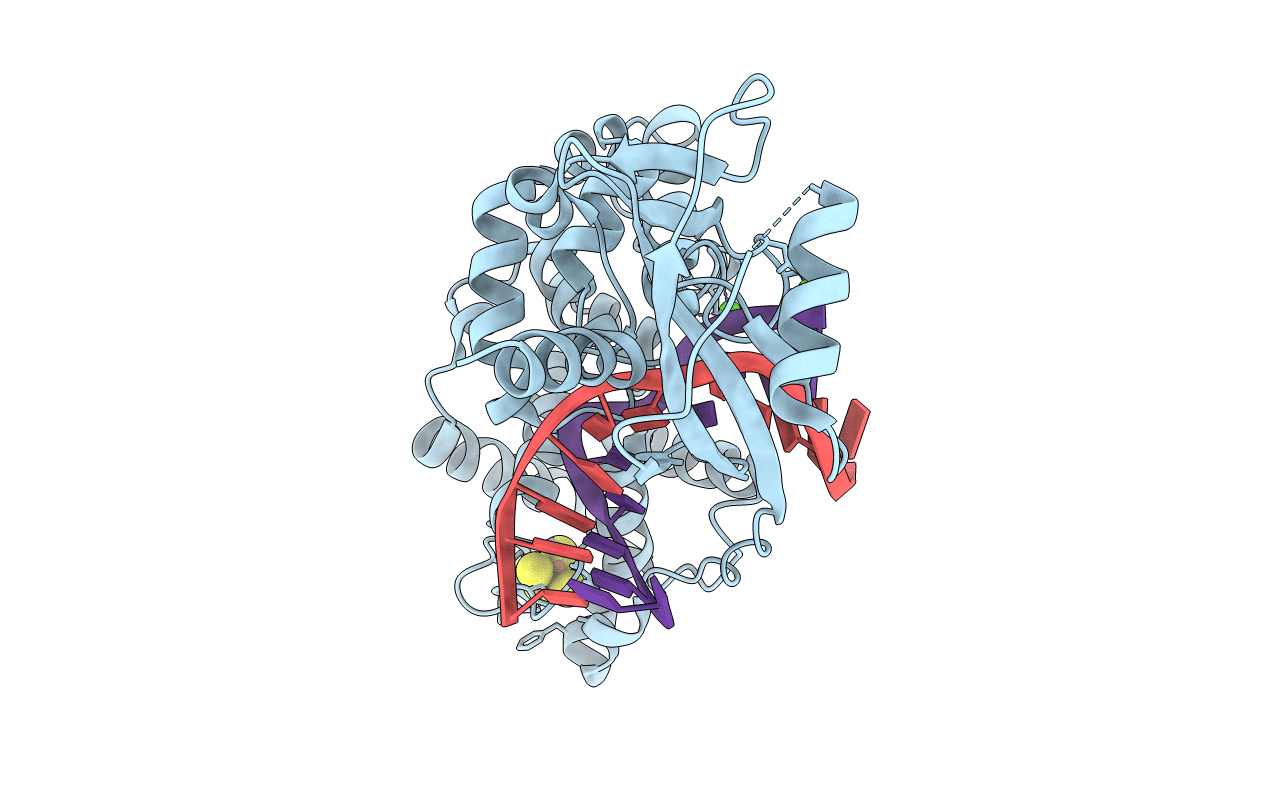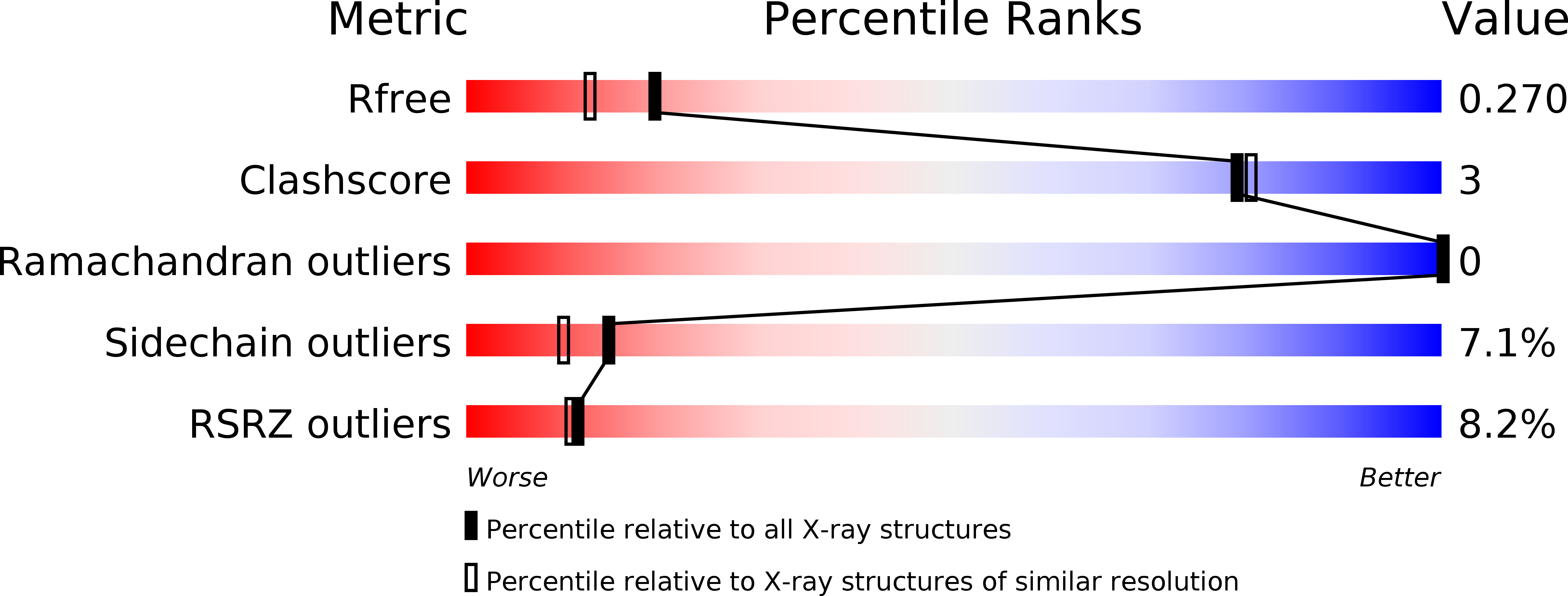
Deposition Date
2019-09-03
Release Date
2019-10-02
Last Version Date
2023-10-11
Entry Detail
PDB ID:
6U7T
Keywords:
Title:
MutY adenine glycosylase bound to DNA containing a transition state analog (1N) paired with d(8-oxo-G)
Biological Source:
Source Organism:
Geobacillus stearothermophilus (Taxon ID: 1422)
synthetic construct (Taxon ID: 32630)
synthetic construct (Taxon ID: 32630)
Host Organism:
Method Details:
Experimental Method:
Resolution:
2.00 Å
R-Value Free:
0.27
R-Value Work:
0.26
R-Value Observed:
0.26
Space Group:
P 21 21 21


